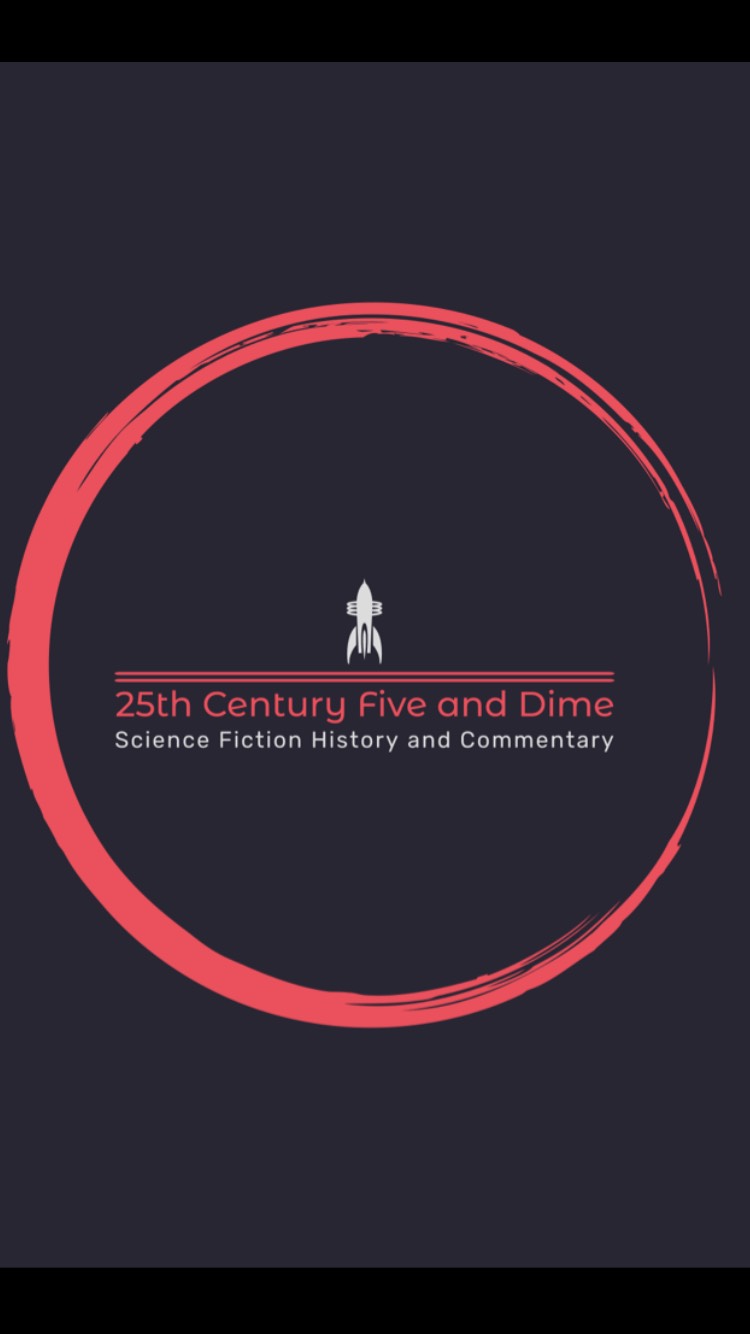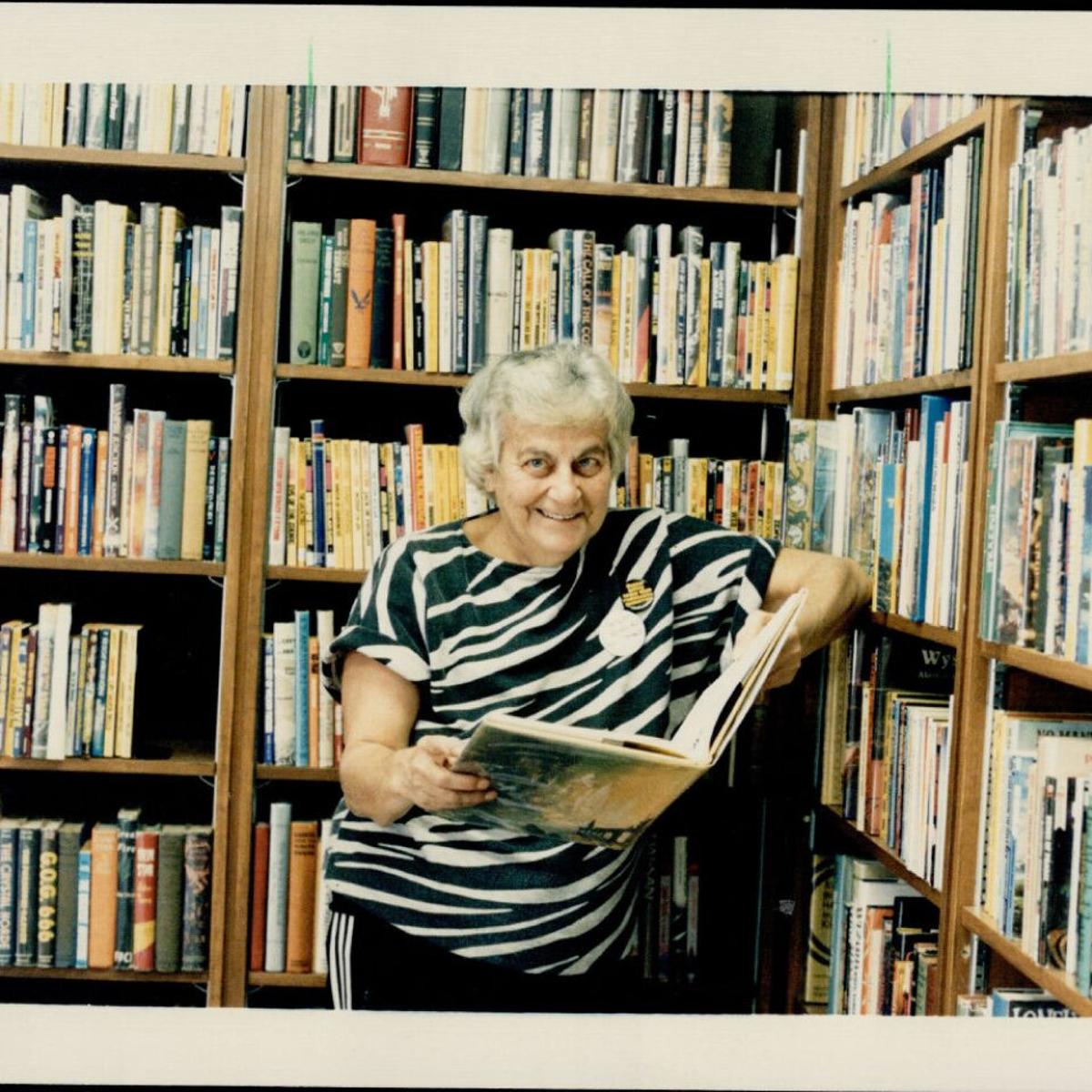
 It has been about six years since I started doing the Dickheads podcast and one of the intense joys for me has been learning the history of 20th century Science Fiction. Discovering authors and their work that I SHOULD HAVE KNOWN like Don Wollheim, Tony Boucher and Judith Merril. One of the reasons I started this column is to share these discoveries. Early in the process of doing the show, I discovered the book The Future is Female edited by one of our most popular guests Lisa Yaszek. A few stories into the anthology I knew I had to have her on the show. That book has a similar mission to this column. While women like Octavia Butler and Ursula K. Leguin are famous now but The Future is Female as a book more importantly will introduce you to more obscure authors like Katherine Maclean and well known in her day Judith Merril. Her name was always a respected one in SF.
It has been about six years since I started doing the Dickheads podcast and one of the intense joys for me has been learning the history of 20th century Science Fiction. Discovering authors and their work that I SHOULD HAVE KNOWN like Don Wollheim, Tony Boucher and Judith Merril. One of the reasons I started this column is to share these discoveries. Early in the process of doing the show, I discovered the book The Future is Female edited by one of our most popular guests Lisa Yaszek. A few stories into the anthology I knew I had to have her on the show. That book has a similar mission to this column. While women like Octavia Butler and Ursula K. Leguin are famous now but The Future is Female as a book more importantly will introduce you to more obscure authors like Katherine Maclean and well known in her day Judith Merril. Her name was always a respected one in SF.
In that collection which collected the best of the pulp era SF ranging from the 20s to the end of the 60s was a story from the 40s by Merril that really stood out for me. “That Only a Mother.” The story of fall-out sickened children of atomic wars was a brutal and powerful stand-out. When Lisa gave us background on the story and author it was clear that JM was an important figure in the community and I needed to know more.
Since then, reading several histories from Fredrik Pohl, Damon Knight, Boucher, and Malzberg further made the point Judith Merril is an important voice in SF. Her role as a founding member of two major NYC clubs The Futurians and the Hydra club predates her publishing that began in 1948. Her year’s best, and country-themed anthologies for England and Soviet SF were important. Her line of books collecting the best of the Magazine of Fantasy and SF were foundational but it was her writing were here to talk about.
 So, who is Judith Merril and what made her such a powerful voice? Her Grandfather was a Rabbi, Father wrote play reviews for a Jewish newspaper and committed suicide when she was six. In 1939, Judith graduated from Morris High School in the Bronx at 16 and rethought her politics under the influence of the Molotov–Ribbentrop Pact (August 23), shifting to a Trotskyist outlook. In this period, she also became one of the few female members of the New York City-based group of science fiction writers, editors, artists and fans, the Futurians, which included Issac Asimov, Fredrick Pohl, CM Kornbluth and Don Wollheim to name a few. A few years later The Hydra club notable members Lester del Rey, Frederik Pohl, Judith Merril, Martin Greenberg, Philip Klass, Harry Harrison, Jerome Bixby, Murray Leinster, and Avram Davidson to name a few.
So, who is Judith Merril and what made her such a powerful voice? Her Grandfather was a Rabbi, Father wrote play reviews for a Jewish newspaper and committed suicide when she was six. In 1939, Judith graduated from Morris High School in the Bronx at 16 and rethought her politics under the influence of the Molotov–Ribbentrop Pact (August 23), shifting to a Trotskyist outlook. In this period, she also became one of the few female members of the New York City-based group of science fiction writers, editors, artists and fans, the Futurians, which included Issac Asimov, Fredrick Pohl, CM Kornbluth and Don Wollheim to name a few. A few years later The Hydra club notable members Lester del Rey, Frederik Pohl, Judith Merril, Martin Greenberg, Philip Klass, Harry Harrison, Jerome Bixby, Murray Leinster, and Avram Davidson to name a few.
I am very excited and interested to check out her novel co-written with C.M. Kornbluth but most of all I want to read her post-Atomic war novel from Shadow of The Hearth. (I have not found it yet). But I started with a collection called “The Best of Judith Merril.” I ultimately choose this collection to get a wider look at her work. Also, because I really wanted to read the story Dead Center for reasons we will come back to.
 This is a fine collection of feminist SF, and compared to the standards of today that definition might not be so obvious but one has to understand how male-dominated the scene was. To call Merril a trailblazer is an understatement. It is not that women were not writing SF, plenty were but without the contributions of CL Moore and Judith Merril, the path may not have been as ready for your Joanna Russ and Leguins.
This is a fine collection of feminist SF, and compared to the standards of today that definition might not be so obvious but one has to understand how male-dominated the scene was. To call Merril a trailblazer is an understatement. It is not that women were not writing SF, plenty were but without the contributions of CL Moore and Judith Merril, the path may not have been as ready for your Joanna Russ and Leguins.
There is an infamous story that Merrill had to challenge John W. Campbell the notorious backward-thinking editor to buy her work. When you read her stories, you can see she would have been stupid not to. It might seem weird to modern members of the community that JM would care if JWC bought her work or not. Remember in the early days there were only a few places to publish at all. While women in TV and film often choose male or non-gender specific names in those days it was not as common in the
SF. Judith Merril however still was first to do many things.
The book. OK the cover is amazing and nothing in the collection is that trippy, but yes it rules super hard. It comes with a very informative introduction I personally wish was longer. The stories themselves are super great and wonderful time capsules of the era they come from. Mostly from the late 40s and early 50s with a little of 60s mixed in. Every story in the collection is good there was not one story I foundboring or felt the need to skip and I can do that from time to time in collections.
The three stand-out stories for me were Dead Center, That Only a Mother, and the novella Daughters of Earth. Let’s start with the one I had read before, That Only a Mother I read in The Future is Female A second read was no less powerful. A subtle surgical tale about the effects of radiation on children born into the atomic age. The story builds to one of the most powerful of endings one that could earn it a place on the best horror short story lists
 Dead Center was the reason I bought this book. In Breakfast in the Ruins, Barry Malzberg highlighted this story not just for its quality but for its place in history. It was one of only two stories taken from any science fiction or fantasy magazine for the Best American Short Stories volumes edited by Martha Foley in the 1950s. The fact that a story published in a 1954 issue of the Anthony Boucher co-edited Magazine of Fantasy and Science Fiction was a huge deal.
Dead Center was the reason I bought this book. In Breakfast in the Ruins, Barry Malzberg highlighted this story not just for its quality but for its place in history. It was one of only two stories taken from any science fiction or fantasy magazine for the Best American Short Stories volumes edited by Martha Foley in the 1950s. The fact that a story published in a 1954 issue of the Anthony Boucher co-edited Magazine of Fantasy and Science Fiction was a huge deal.
This story uses multiple points of view to tell a heartbreaking story of the space age. Written 16 years before moon landings were actually a thing. The points of view revolve around a family, the child and his parents who build and fly spacecraft. The story highlights the danger and sacrifice of space travel in a genre that at the time was seen as cheerleading the space race. While not as critical as Malzberg would later become with novels like The Men Inside and Beyond Apollo JM’s Dead Center is a powerful story that still holds up.
Daughters of Earth is a great story and the most feminist of the tales. This story is about women becoming front and center in the efforts to expand into the great galaxy. I was struck as a space nerd, how good the science was for 1953. I mean this was two years before Elvis released his first single and JM is writing about relative time dilation and getting a great deal of Pluto’s orbital mechanics pretty close to what we still know today. More than that the story works because despite all the SF ideas the fully realized human characters with beating hearts just work. Merril is one of the most important voices in SF and what is clear to me reading this book and researching her life that she cannot be forgotten. Read Judith please, and this is a good place to start.
Dickheads Podcast roundtable on Judith Merril: https://youtu.be/M83NBikgZ4w?si=8SOeo6a73pPz3GHB
Audio: https://soundcloud.com/dickheadspodcast/dick-adjacent-14-judith-merril
Support my work with a donation: https://www.buymeacoffee.com/DavidAgranoff











1 Comment